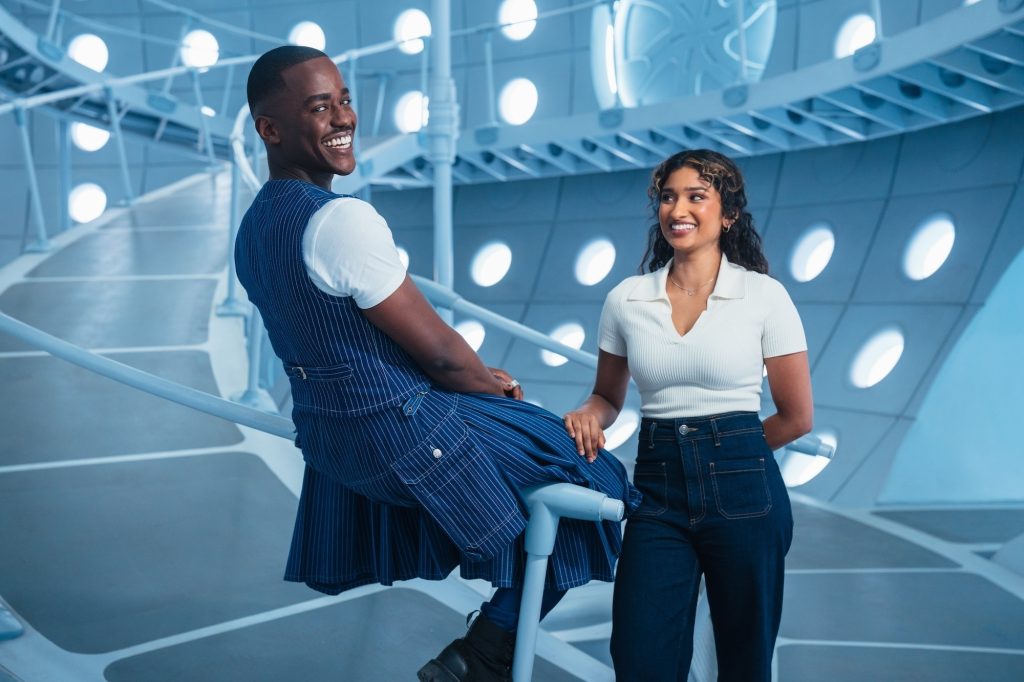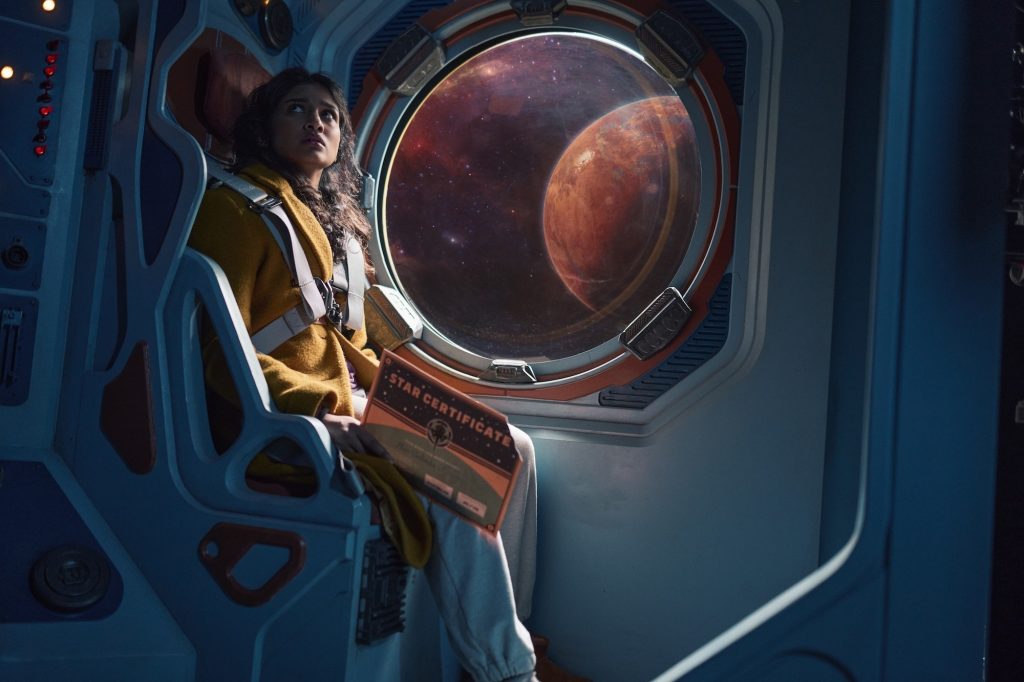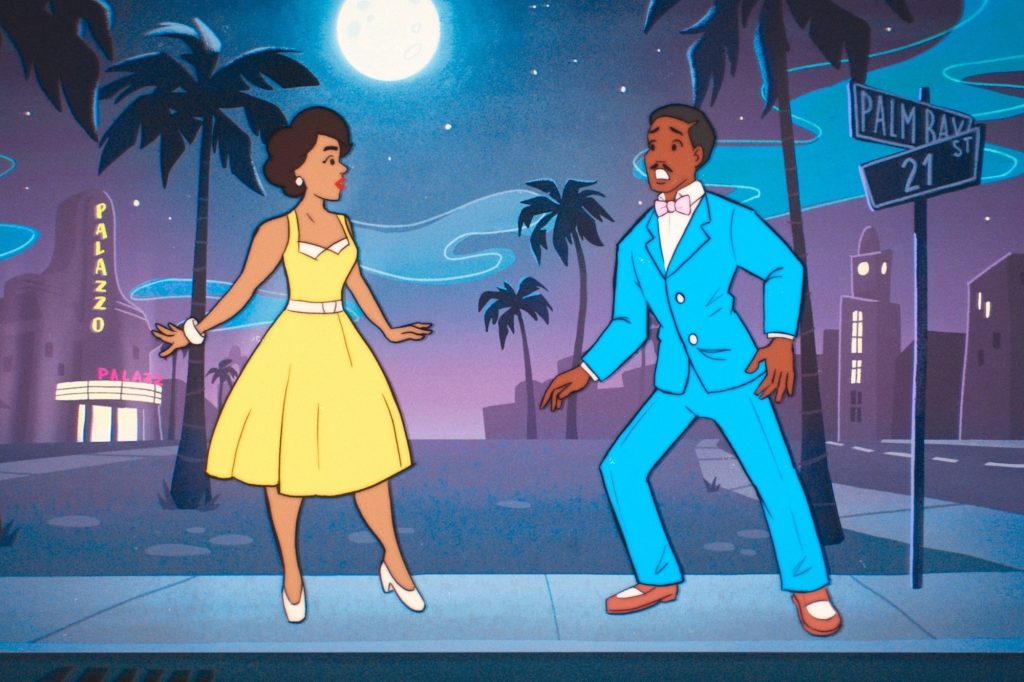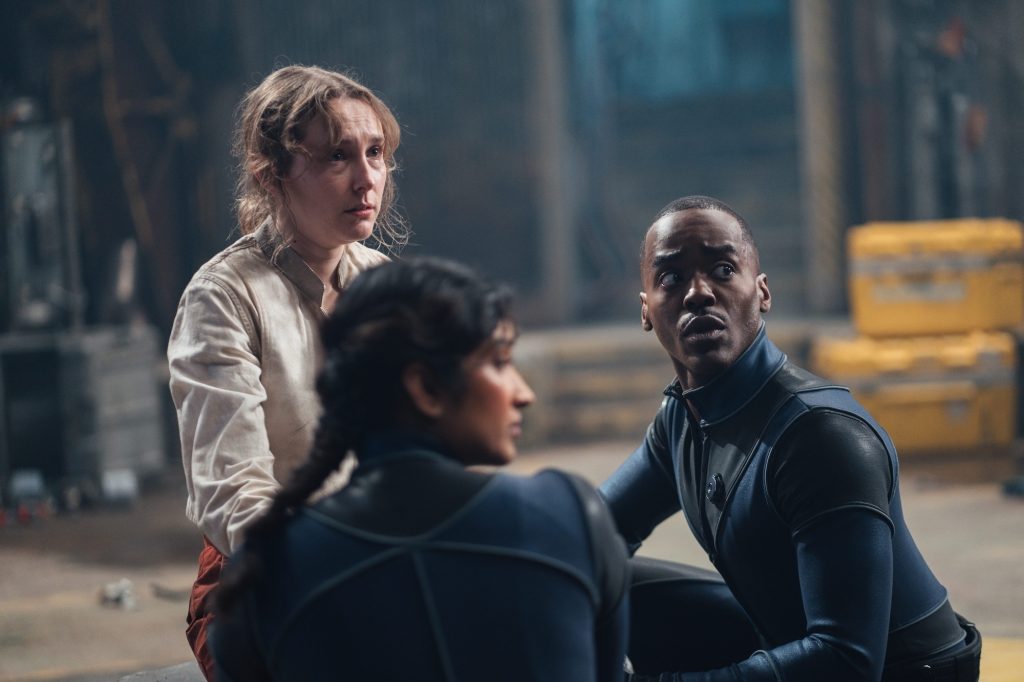The First Half of “Doctor Who” Season 2 is Meta Goodness

The first half of season 2 of the ‘new’ Doctor Who starts off with four banger episodes. Each continues the fourth wall-breaking that the first season had as well as plays with the tropes the show is known for in different ways.
Warning: This review contains SPOILERS!
My April was the month from hell on a personal level, so I hadn’t had a chance to watch the latest series until this past weekend. As a result, binging the first four episodes back-to-back led me to see things I may not have missed had I watched them when they came out.
I had—for the most part—enjoyed the first ‘new’ season. I absolutely adore Ncuti Gatwa and felt like the show had re-found its footing. Davies obviously wants to do right by the show and the characters therein, and while he did make the character of Ruby a mystery ala Clara (and somewhat Amy), I felt it wasn’t the defining characteristic of her. He’s also been doing a pretty decent job of balancing that line between not turning off new viewers with too much referenced lore and not frustrating ongoing fans with backstory that they already knew.
Season 2 got off to a (mostly) good start with the Christmas special, “Joy to the World”. It continues the momentum with episode 1, “The Robot Revolution”. Taking the concept of those star certificates you can buy literally, the plot has Belinda Chandra (Varada Sethu) as the unlucky recipient of one from her boyfriend at the time, Alan Budd (Jonny Green).
The Doctor (Ncuti Gatwa) seems to be in search of her as she does her rounds as a nurse and tries to get to her before some robots break into her apartment, threaten her roommates, zap the neighbor’s cat, and take Belinda to Missbelindachandra One—a planet circling her star. There’s another fourth-wall-breaking appearance by Mrs. Flood (Anita Dobson) as Belinda’s neighbor before the spacecraft takes off.
Davies makes a small commentary on AI (the robots are controlled by something called the “AI Generator”, and “it knows no pity, no kindness, no mercy”), but for the most part, the plot focuses on the robots being in charge. The Doctor, posing as the Royal Historian, manages to get the message across that the robots are faulty and can’t hear every ninth word—and that there is a rebellion ready to start.
We have the stereotypical potential companion who seems to really like and want to travel with the Doctor who dies (poor Sasha 55, played by Evelyn Miller). But this time, the Doctor seems visibly shaken by the death—even spilling a few tears.

The story acknowledges that Belinda looks exactly like Mundy Flynn (Sethu’s previous role in Who). When the Doctor says he was told about her and was told she was important, she asks how. When he responds with the (now oft-quoted) ‘timey-wimey’, the show calls itself out by having her laugh at the phrase.
Because of time travel shenanigans, the AI is actually Alan—and Belinda is responsible for him being here. The robots had brought him to the planet before the robot revolution, and it turns out that he isn’t such a great guy. These shenanigans are also how Belinda saves the day.
As the episode is wrapping up, we get to what appears to be the standard ‘come travel with me’ offer and eager acceptance of the companion only for Belinda to acknowledge that the Doctor is dangerous and calls out his contribution to Sasha 55’s death, saying, “I am not one of your adventures!” But when he tries to bring her back to Earth the same day she left (May 24, 2025), he is unable to. The episode ends with the hint that the Earth has gone ‘boom’.
The episode is a good start to the season. Belinda is different enough from other companions not to feel like a re-tread. Yes, she’s feisty, but not in the same way that River or Clara was. It sets up the season arc, and the nerd in me is curious to wonder if the May 24 date is somehow a hat tip to Douglas Adams, since Towel Day is the 25th.
Episode 2, “Lux”, is, hands down, my favorite episode of this series so far. Taking place in 1952, Belinda is all but pushing the Doctor to continue his attempt at getting her back home, only to be diverted by the news that 15 people had disappeared from the nearby cinema 3 months ago.
The projectionist Reginald Pye (Linus Roache) has been staying in the building, still playing films. Turns out that the animated character Mr. Ring-a-Ding (Alan Cumming—and they let him sing this time!) has turned sentient, breaking both the fourth wall in the theatre as well as in the show itself. He’s actually Lux Imperator, one of the Pantheon of Discord.
As such, he is bound by the rules to tell the Doctor how he can be defeated. But he quickly traps the two protagonists in film. And this is where the episode shines. Anyone who knows me knows I’m a huge fan of meta references—when done well, that is. And “Lux”, I feel, did a hell of a job with it. Not only do we get Scooby Doo-style animation (with simple dialogue to match), we get the story within a story concept when—trying to break out of the frame, there’s a reference to the bad continuity of the 1950s plot… only for their second attempt to find out that they are characters in a show called Doctor Who.
The three fans they encounter (and having attended my share of cons, including Gallifrey One, I can heartily say I know those fans. I AM one of those fans) are, of course, super excited to find out the Doctor and Belinda are real. But like true fans, they’re concerned about how their current predicament is a little too close to the episode they managed to find leaked online, but don’t want to spoil the ending for the two.

The Doctor tries to figure out why his life would be so fascinating to watch (with frustration that the fans’ favorite episode is “Blink” and not one of the ones starring Gatwa). But surprise—it’s another layer of worlds. The fans aren’t really real, and they are there just to get the two back to the ‘real’ world.
They burn the film strip to escape, with the Doctor showing Belinda the healing benefits of bi-generation. Unfortunately, that plays right into Lux’s hands. He starts to absorb the Doctor’s regeneration energy to become ‘real’. Belinda convinces Reginald to burn all the reels… only for that to make sunlight come in and be powerful enough for Lux to become so powerful he is ‘light without end’.
We have our happy ending: the fifteen people are returned no worse for wear. But the Doctor is eager for the two of them to leave. As they leave via the TARDIS, Mrs. Flood pops up again and says that the show “ends May 24th”.
As the credits roll, we cut to the three Doctor Who fans (and I will eat my hat if there aren’t any fans cosplaying these people when I go to Gallifrey One next year) somehow still alive, doing the thing fans do best—criticizing the show, talking about where it didn’t work.
The episode was a great playing of tropes against itself and continued the theme of the fourth wall breaking that’s been happening since pretty much the start of Gatwa’s run. Alan Cumming is delightfully evil, and the episode handles the racism of 1952 Miami without being anvilicious). And, of course, I loved the whole meta aspect: referencing other episodes, interacting with the fans, and making comments about characters. (And thankfully, as with “Love & Monsters”, Davies shows that fans, for the most part, are not stereotypes. Even if he does have one of them make a dig about them ‘being annoying’.)
Following this episode with “The Well” (both directed by Amanda Brotchie) is like mood whiplash. We start with what feels like a scene mid-episode: the music is ramping up already, the two are being roughly handled as the TARDIS shakes, and instead of the correct time, they land 500,000 years in the future. As they change to the tune of Britney Spears’ “Toxic” (hey, wait a minute!), the Doctor tells Belinda that “there is always a human race”.
After they jump out of a perfectly good spaceship, they find out they joined a mission to find out what happened at a mining colony left with only one survivor. The place is a mess: everything is broken. And a point is made that all the mirrors are smashed.
They run into said last survivor, a deaf woman by the name of Aliss Fenly (Rose Ayling-Ellis). As she tries to explain what happened, her face changes just for a bit, enough to worry both Belinda and me.
They hear a sound, and one of the other characters insists that there’s something behind Aliss, making me wonder if this is some sort of Quiet Place kind of monster. The being seems to always be ‘behind Aliss’.

Meanwhile, both the Doctor and Belinda find out that the Earth no longer seems to exist, nor does the human race. The Doctor also learns that this is a diamond mine and, in fact, was previously named “Midnight”. The entity that is haunting Aliss (and was responsible, albeit indirectly, for the deaths of everyone else) had come out of a well and started doing its thing. The Doctor thinks that it’s playing games, learning, and as he talks to it, he learns that it knows his name.
He remembers that they are in a diamond mine, and the reason it smashed all the mirrors was so that it couldn’t see itself. It initially jumps to Belinda, but he offers himself to it—only for one of the troopers to offer to shoot Belinda in just such a way to not kill her but to still scare off the creature.
The Doctor and Belinda go back to the TARDIS, and the trooper goes to make her report… to Mrs. Flood. The other trooper survivor starts talking to someone, only to feel as though something is behind her.
“The Well” is rightfully creepy and is good enough to deserve to be a sequel to one of the most terrifying episodes of the show. It’s always—fun? Yeah, let’s go with fun—when we have a monster we can’t see. And, of course, the true terror of “Midnight” (and this episode as a result) is how frightening humans can be all on their own.
Finally, we have “Lucky Day”, the only one so far not written (or co-written) by Davies. Pete McTighe, however, is no stranger to Who, having written many promos and mini-sodes for the show’s promotional efforts.
A ‘Doctor-light’ episode, it brings back Ruby Sunday (Millie Gibson). But first, we have to go back to 2007, where the Doctor and Belinda are trying to once again get a read on the Vindicator to get back to May 24, 2025. They run into a (at the time young—dear Lord, was 2007 that long ago???) Conrad Clark (Jonah Hauer-King when it’s current time), where the Doctor gives him a coin, telling him it’s his lucky day.
Flash forward to today, and Conrad—being a white man of a certain age—has a podcast about the ‘box’ he saw disappear that day. His latest guest is Ruby. He mentions that he ran into the two a year ago. He had followed them into an abandoned building that made me briefly think we were going to see a different side of the Autons from “Rose”. He had seen them interact with the monster of the week (or I guess I should call it the alien of the week), the Shreek. It can use its pheromones to mark prey, and surprise, surprise, Conrad had gotten some on him. Thankfully, Ruby has an antidote that she can give him.
He offers her dinner, and we get a montage of the two dating over several weeks. She eventually gets to the point where she goes to meet his friends, but they are interrupted by what seems to be a pair of Shreeks. Conrad admits he never took the antidote. When UNIT is called in, he reveals he’s actually part of a group called Think Tank, dedicated to showing the ‘lies’ that UNIT has been perpetrating. (He casually mentions the incident of the Yeti in the sewers, which is a Second Doctor story, as one of the ‘fake’ stories.) He chastises them for wasting taxpayer money and using the story of aliens to cover up something far worse. (Gee, I wonder where McTighe got the plot.)

Conrad is released and becomes basically an influencer, doing talk shows and the like. While doing this, he doxxes the entire UNIT team, including Ruby. He then breaks into the main headquarters, livestreaming. He wants UNIT to admit that they’ve been lying this whole time, throwing an insult at the Brigadier while he’s at it (“you should be very careful about what you say about my father”, Kate Stewart—played by Jemma Redgrave—says with a brilliance that I believe Nicholas Courtney himself would’ve been pleased with.)
Kate decides to play his game, and releases the Shreek, who, of course, is still hunting Conrad. He’s saved at the last minute by Ruby and sent to prison. We finally get the Doctor—visiting the man and letting him know “you’re special for all the wrong reasons”. After the Doctor leaves, we see Mrs. Flood visiting Conrad with a set of keys, calling herself the Administrator.
“Lucky Day” is like the other side of the coin of “Love & Monsters”. Both episodes have the Doctor encounter our guy when he’s a little kid. Both episodes show how this caused a huge influence on the child’s life; with their lives each being dedicated to finding the man—to the point of obsession. Both episodes show how they each gathered a group around them to help. And both episodes show what it’s like to be on the other side of the plot of the Doctor briefly visiting a person’s life.
I am one of the rare people who actually like “Love & Monsters”. I appreciate how Davies used the plot to show that not all fans are the same and that fandom can be both fun and friend-making as well as awful and divisive. While this wasn’t written by Davies, it was very obviously a reply to not only the response of a certain segment of ‘fans’ who are whinging about the show “going woke” but also what’s happening in political circles
I also liked that it was yet again one of those episodes that showed the fallout of what it means to be visited by the Doctor. Not only with Conrad and his obsession, but also by showing that Ruby suffers from PTSD from her travels. This was… harsh, but not in a bad way, if that makes sense.
With Davies’ first time handling Doctor Who, the overall plot arc of series one’s “Bad Wolf” story was finally showing itself by the midway point. But Davies himself acknowledged it wasn’t until the fourth episode that he had decided to make the phrase a thing. But this time, I definitely get the feeling he went into it wanting an overall season arc. The fourth wall breaks, the continued use of Mrs. Flood, the references to the Pantheon: it is all leading to something. Or at least, I hope it does.
Doctor Who is available on Disney+ for American viewers, and on the BBC iPlayer for those of you in the UK. The next episode is “The Story and the Engine,” and I can’t wait to see where this is going.
Author: Angie Fiedler Sutton
Angie Fiedler Sutton is a writer, podcaster, and all-round fangirl geek. She has been published in Den of Geek, Stage Directions, LA Weekly, The Mary Sue, and others.
She also produces her own podcast, Contents May Vary, where she interviews geeky people about geeky things. You can see all her work (and social media channels) at angiefsutton.com.
Help support independent journalism. Subscribe to our Patreon.
Copyright © The Geekiary
Do not copy our content in whole to other websites. If you are reading this anywhere besides TheGeekiary.com, it has been stolen.Read our






